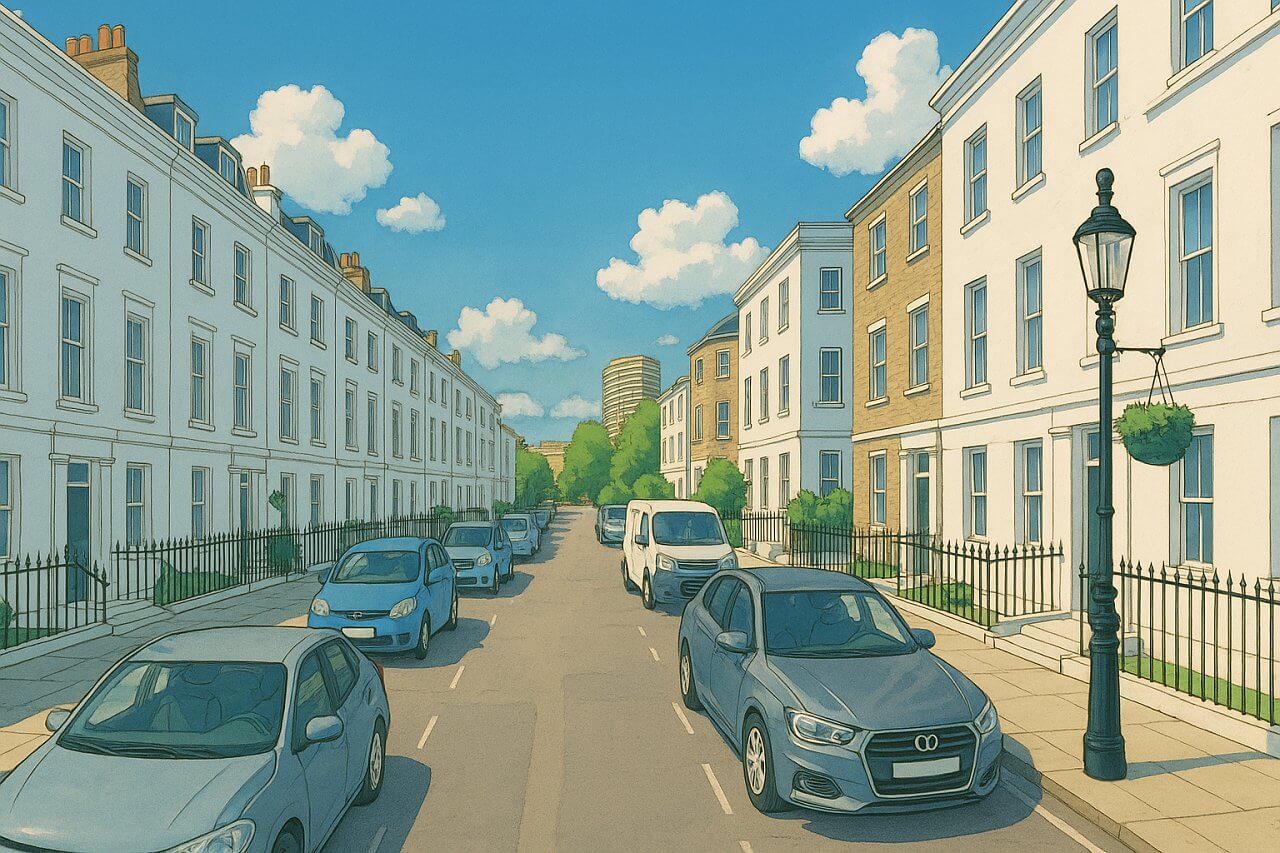
Westmoreland Terrace, London
Westmoreland Terrace is a quiet, largely residential street located in the heart of Pimlico, within the City of Westminster, central London. This attractive and relatively short street links Sutherland Street in the north to a dead-end cul-de-sac in the south. Although it originally continued south to Lupus Street, that extension is now a pedestrian-only path. The street also has vehicular access via Clarendon Street and an exit segment onto Sussex Street.
Location and Orientation
Westmoreland Terrace is part of Pimlico’s distinctive grid layout and is just a short walk from the River Thames. It measures approximately 200 metres (656 feet) in length. Traffic flows in both directions, though the southern section near the cul-de-sac sees limited vehicle movement due to its closure at the end.
History of the Street
Westmoreland Terrace was developed in the mid-19th century as part of Thomas Cubitt’s grand scheme to turn Pimlico into a residential district for the middle and upper-middle classes. It mirrors much of Pimlico’s architectural identity with its stucco-fronted terraced houses and formal uniformity.
Origin of the Name
The street takes its name from the historic English county of Westmorland (modern spelling: Westmoreland). This naming convention, using counties and noble titles, was popular across Pimlico during the Victorian era.
The pronunciation is typically WES-muh-lund, and in the International Phonetic Alphabet (IPA), it is rendered as /ˈwɛs.mə.lənd/  .
.
Character and Architecture
Today, Westmoreland Terrace retains its elegant character. It is a tranquil residential street with a blend of historic homes and sensitively modernised flats. The typical architecture consists of four-storey terraced houses, many now subdivided into flats, with white or pastel-painted façades and small front gardens or steps.
Nearby Sights and Attractions
Though a quiet street itself, Westmoreland Terrace is ideally positioned near several popular sights:
- Pimlico Gardens – a small riverside park just to the south.
- Tate Britain – a short walk along Millbank for lovers of British art.
- Bessborough Gardens – a pleasant green space nearby.
- Riverside Walks – the Thames Path is easily accessible.
Real Estate and Property Values
As of May 2025, property prices on Westmoreland Terrace typically range from:
- 1-bedroom flats: £650,000–£750,000
- 2-bedroom flats: £900,000–£1.2 million
- Full freehold terraced houses: £2.3–£3 million
These prices are above the London average, reflecting the street's central location and its period charm. Flat sizes range from around 500–800 sq ft (46–74 sq m), while full houses typically span 1800–2400 sq ft (167–223 sq m).
Transport Links
Nearest Underground Stations
- Pimlico Station – on the Victoria line, approx. 8 minutes’ walk.
- Victoria Station – serving the Victoria, Circle, and District lines, and National Rail, approx. 15 minutes’ walk.
Nearby Bus Stops
The closest bus stops are found on Lupus Street and Sutherland Street. Frequent services include:
- Bus 24 – to Hampstead Heath and Victoria.
- Bus C10 – to Canada Water and Victoria.
Fun Fact
An interesting quirk of Westmoreland Terrace is that although it no longer connects directly to Lupus Street, Google Maps and some GPS systems still show it as a through-route, occasionally confusing new visitors and delivery drivers alike!
Quick Facts
- Location: Pimlico, City of Westminster
- Length: Approx. 200 metres (656 ft)
- Traffic: Two-way, ends in cul-de-sac
- Historic Origin: Mid-19th century (Cubitt development)
- Name Origin: Named after the county of Westmorland
- Pronunciation: WES-muh-lund (/ˈwɛs.mə.lənd/)
- Character: Quiet, residential, period-style terraced houses
- Nearby Sights: Tate Britain, Pimlico Gardens, Thames Path
- Property Prices (2025): £650,000–£3 million
- Flat Sizes: 500–800 sq ft (46–74 sq m)
- Nearest Tube: Pimlico (Victoria line), Victoria (multi-line)
- Nearby Buses: 24, C10
- Fun Fact: Still mislabelled as a through-road on some maps
Map of Westmoreland Terrace, London

Painting of Westmoreland Terrace, London (View image in full size)